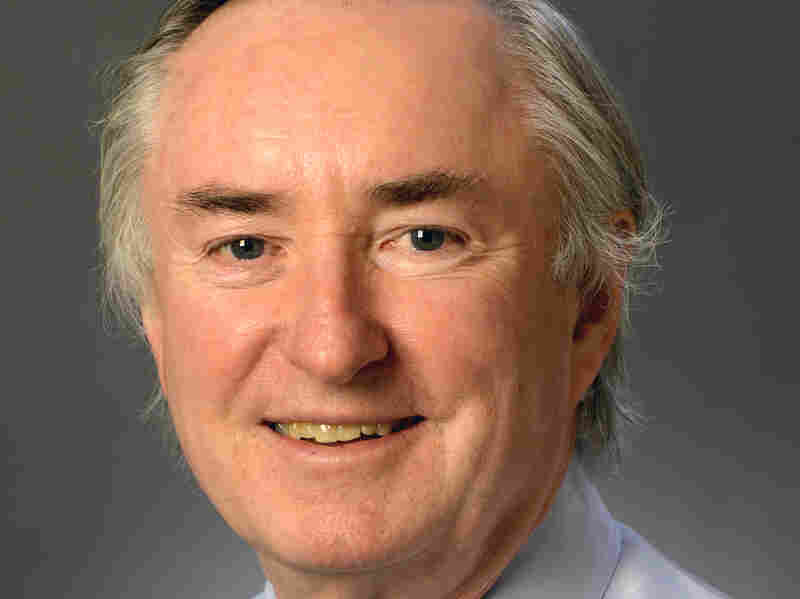Many Former Foster Youths Don't Know They Have Health Care
Laticia Aossey was hospitalized while a student at the University of Northern Iowa when she realized she hadn’t signed up for health insurance. Matthew Putney/Courtesy of Youth Today hide caption
itoggle caption Matthew Putney/Courtesy of Youth Today
Laticia Aossey was flat on her back in an Iowa hospital bed with a tube up her nose, a needle for a peripheral IV stuck in one arm and monitors pasted to her body. It was early June 2014, a week after her 18th birthday, when a friend brought Aossey’s mail from home — including one ominous letter. Aossey’s health insurance was about to be discontinued.
“My heart dropped. I just wondered to myself, ‘Are they going to pull this tube out, unhook me from everything and roll me down to the street?’ ” Aossey said. “Could I get the medicine I needed?”
When children “age out” of foster care at age 18 in Iowa, they are eligible to receive Medicaid under the Affordable Care Act until they turn 26. But Aossey, a ward of the state as a foster child, had not filled out the necessary paperwork. Then she fell ill with stomach ulcers, acid reflux and cyclical vomiting.
She was in college at the University of Northern Iowa in Cedar Falls, and instead of using her dormitory address she had used a friend’s home address. The state Medicaid office sent the paperwork to complete her health care enrollment to her friend’s address in Iowa City, so she did not receive it right away.
“The first call I made from the hospital to get it straightened out, the woman said, ‘Your parents need to call,’ ” Aossey said.
“My parents? I was in foster care. I had no parents. Then she said my caseworker, an adult, my boss, somebody … [other than] me had to call. She wouldn’t talk to me. I was 18.”
Aossey’s doctors finally calmed her fears, and a couple of days later, she said, a caseworker arrived to help her complete the paperwork. She realized she could have managed that before things became complicated in the hospital.
“Be an adult,” Aossey advises other foster youth. “Find a way to do your paperwork. Do not rely on other people for something you should do.”
Aossey is one of 400,000 foster youth in the nation, and one of approximately 23,000 per year who age out of foster care when they turn 18 (or 21 in some states). They are all eligible for Medicaid, regardless of income, under the Affordable Care Act until 26.
Federal law requires states to cover former foster youth, and the federal government provides Medicaid matching funds to pay for it. But 21 states chose not to expand their Medicaid programs under Obamacare. And some states make enrollment for former foster youth easier than others.
“In some states, where the state is not embracing ACA in general, there wouldn’t be a particular incentive for them to inform young people of their eligibility,” says Celeste Bodner, founder and executive director of Foster Club, a national advocacy organization for foster youth. “If you want to call that a hostile environment, I don’t think that is a stretch.”
In California and New York, youth who age out of foster care are automatically enrolled in Medicaid. But even then, social services providers say they often need help figuring out health care.
The Jewish Child Care Association, which serves 750 foster youth of all faiths and backgrounds in New York City, puts significant resources into getting teens in foster care ready to be independent. A state-funded program includes guidance on filling prescriptions and managing health care.
“Navigating anything as a 20-year-old under the best of circumstances is tough and anxiety-provoking,” said Ronald E. Richter, CEO of the JCCA and a former commissioner of New York City’s Administration for Children’s Services. “Not all 20-year-olds come in for help with a smile on their face. Systems are not built for an anxious, stressed out 20-year-old.”
California automatically enrolls foster youth in Medi-Cal, its Medicaid program, but even that seemingly foolproof method has its glitches.
The Covered til 26 campaign, run by the advocacy organization Children Now, has tried to canvass the foster youth population, yet some slip through the safety net because of coding issues or questions about eligibility, changing addresses, incarceration, health issues and the sheer complexity of the system.
And in states without automatic enrollment, “What tends to happen when kids age out of foster care is that nobody tracks them, nobody keeps in touch with them,” said Bodner, of Foster Club. “It is extremely difficult to get word out to kids age 18 to 26 who are eligible. It can be an issue because that 18 to 26 population is really tough to find, there is no master list or a mailing list. This group is particularly transient.”
Many former foster children also would qualify for Medicaid based on income, but they may not be aware that they are eligible because of their foster status.
“It’s a complete maze,” said Bodner. “They get tracked into an income-qualification category as opposed to the automatic eligibility.”
Medicaid coverage for former foster children takes the place of insurance coverage that other young adults are eligible for through their parents, according to Jessica Haspel, a senior associate who handles welfare policy for Children Now in California.
“These are youth that have experienced abuse and neglect and the state has become their parent,” Haspel said. “It is giving them an equal protection other youth have had. It is about equity.”
Ray Glier writes from Atlanta. This story was produced by Youth Today, the national news source for youth-service professionals, including child welfare and juvenile justice, youth development and out-of-school-time programming.
This entry passed through the Full-Text RSS service – if this is your content and you’re reading it on someone else’s site, please read the FAQ at fivefilters.org/content-only/faq.php#publishers.











